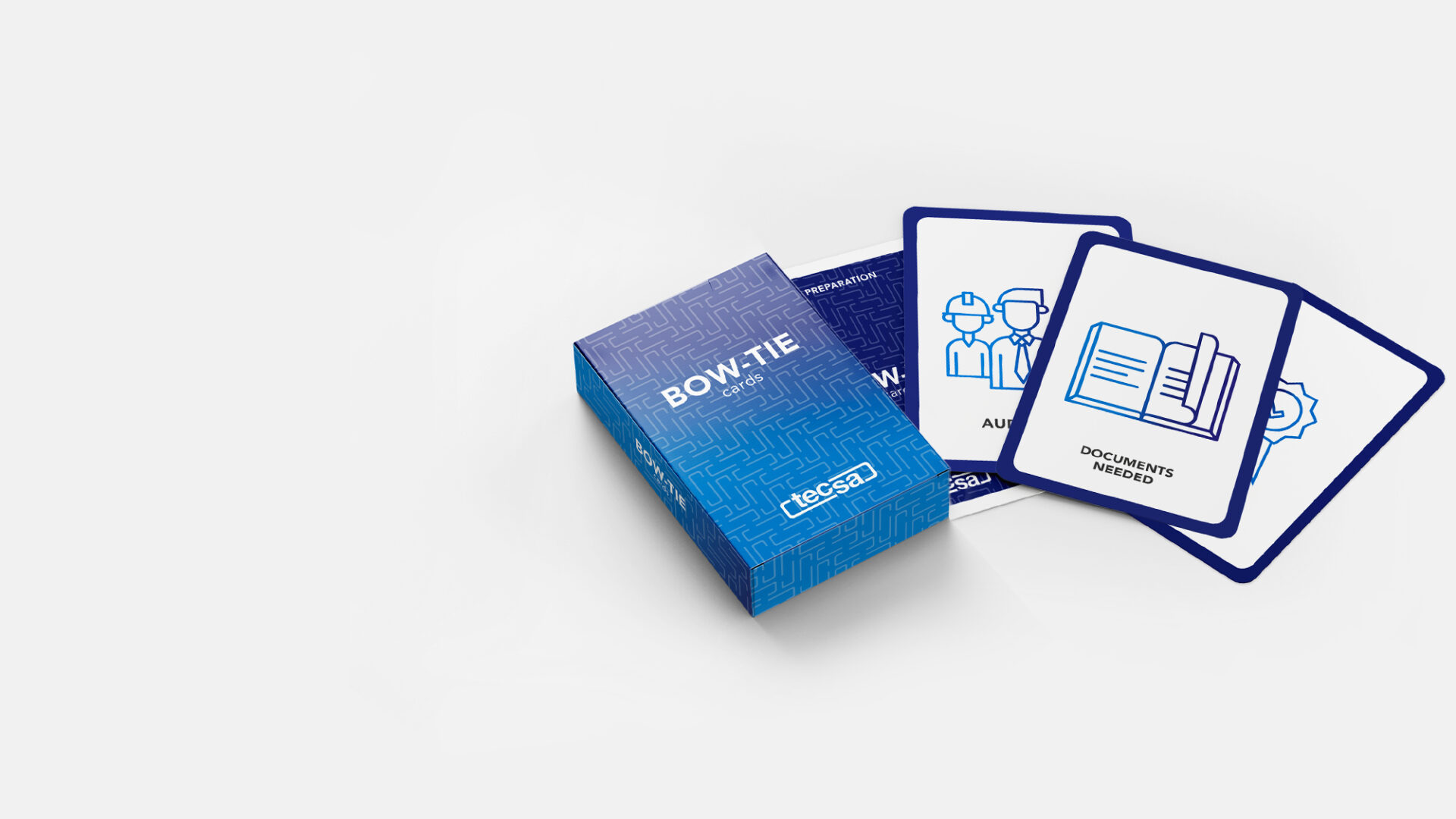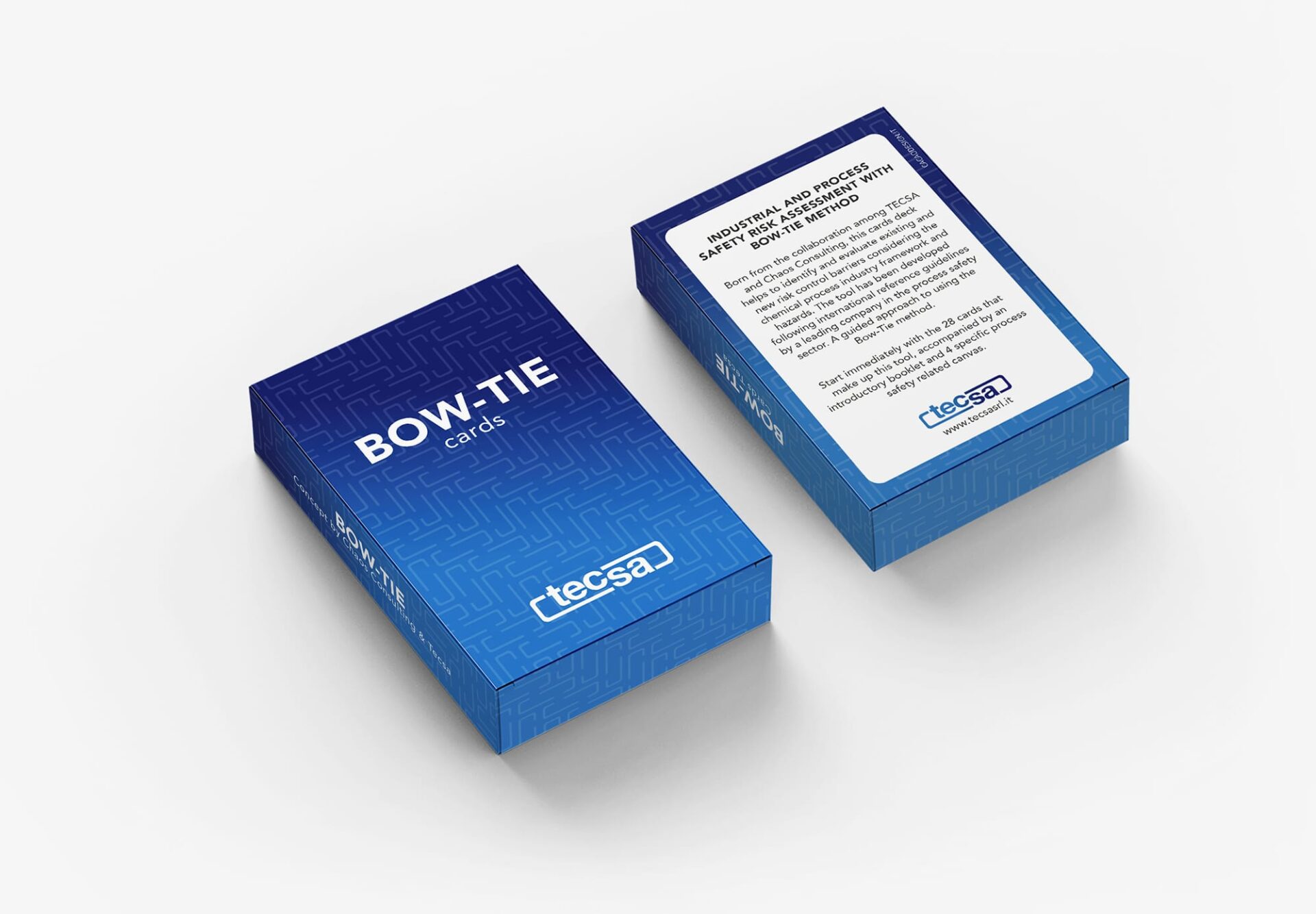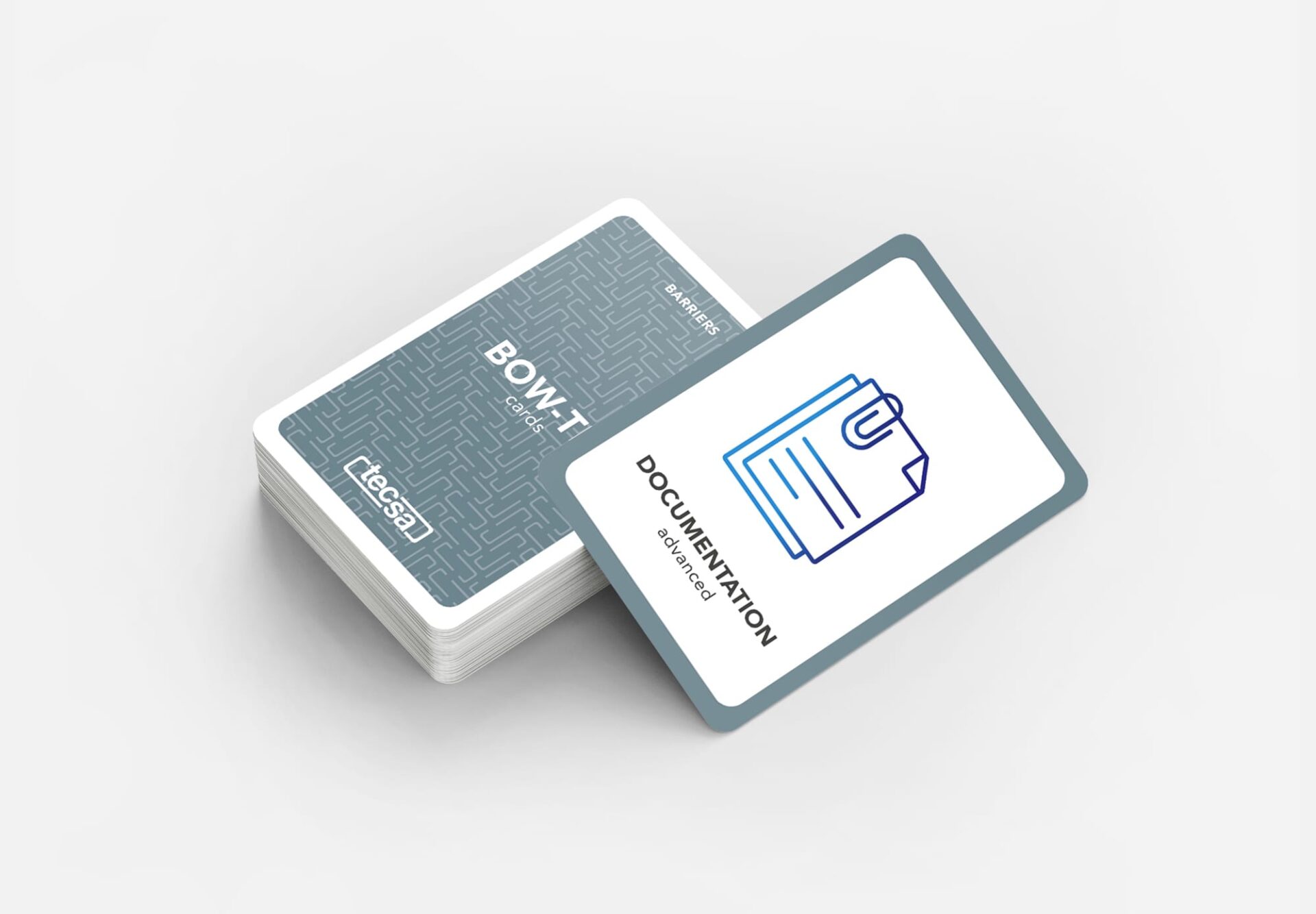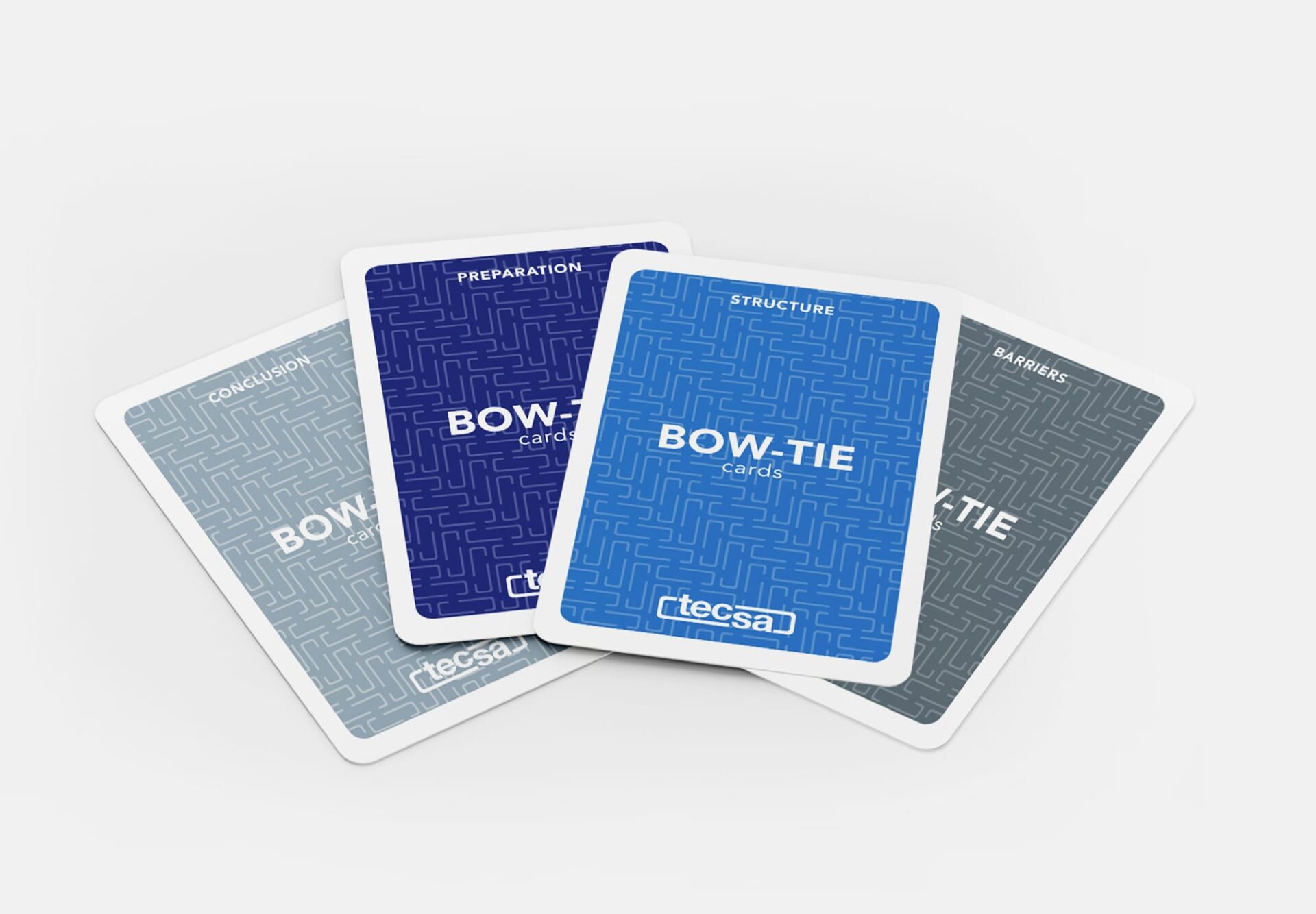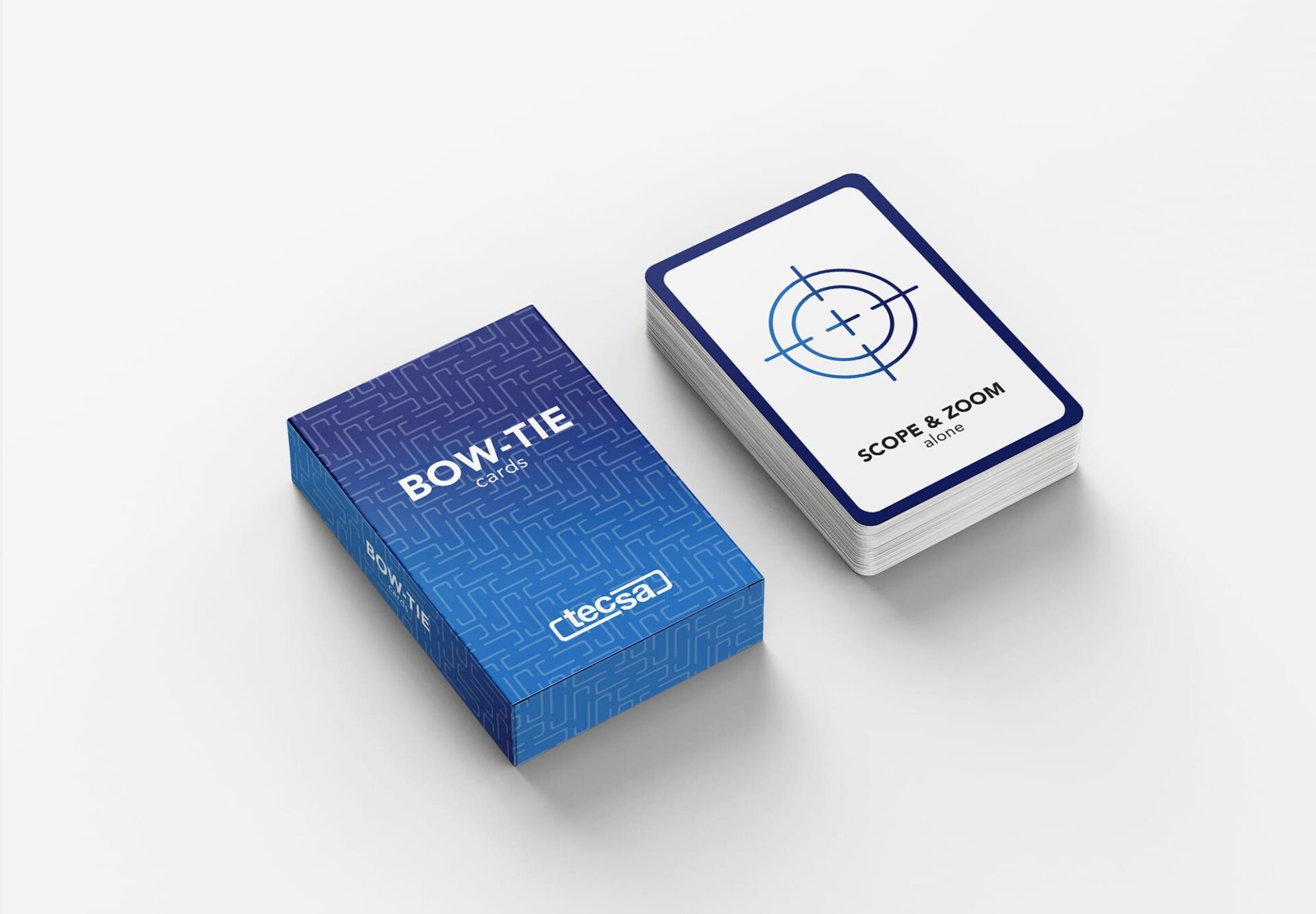The efficacy of the Bow-Tie method
Risk assessment procedures are one of the cornerstones of the work of consultants, process companies, and specialized engineers. Thanks to the tool Bow-Tie Cards Tecsa you can optimize the work of analysis and risk assessment in the industrial environment.
Luca Fiorentini, author of the manual “Bow-Tie, industrial risk management across sectors” and Rosario Sicari, together authors of the publication “Analysis, evaluation and operational management of risk”, deconstruct the Bow-Tie method to outline a guided system of analysis and evaluation of risk. From the combination of Tecsa’s solid technical experience and Chaos Consulting’s skills, comes Bow-Tie Cards Tecsa.
The tool, effective and versatile, will guide you in the study of critical events for process and plant safety. The incisiveness of the Bow-Tie method at the service of industry.
sessions, book Bow-Tie
Cards Tecsa now.


